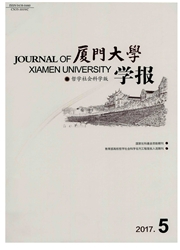

 中文摘要:
中文摘要:
外汇净流入的随机性以及汇率的不确定性,使得政府部门、金融监管机构等愈加关注对外汇储备收益风险,特别是对超额外汇储备的风险管理,以及如何制定合理有效的管理策略,成为当前亟待解决的问题.在外汇储备管理领域,通过引入随机场景序列,结合风险极大惩罚模型和风险约束模型,并采用具有容易搜索到多个Pareto最优解优点的差分进化算法,可以确立对超额外汇储备动态风险的管理策略.研究结果表明,动态风险管理策略能够更好地平衡期望收益和风险之间的关系,使得管理部门能够根据自身的风险承受能力,更好地实现风险最小化和收益最大化的一致性,从而达到由被动管理向积极管理平稳过渡的目的.
 英文摘要:
英文摘要:
The randomness of net foreign exchange inflows and the uncertainty of exchange rates have made governments and financial regulatory organizations more concerned about the risk management regarding returns of foreign exchange reserves in general and excess foreign exchange reserves in particular. It is imperative to develop appropriate management strategies. This study employs the model of random scenarios as well as the maximum risk punishment model and the risk constraint model in addition to differential evolution algorithm that has the advantage of finding almost effortlessly multiple Pareto optimal solutions and we propose an appropriate management strategy for reducing the dynamic risks of ex- cess foreign exchange reserves. Our study concludes that an appropriate dynamic risk management strategy is conducive to a better balance between expected returns and risks thereby minimizing risks while maximizing returns according to the capability of regulatory organizations to face risks, in order to make the transition from passive management to proactive management smooth and stable.
 同期刊论文项目
同期刊论文项目
 同项目期刊论文
同项目期刊论文
 期刊信息
期刊信息
